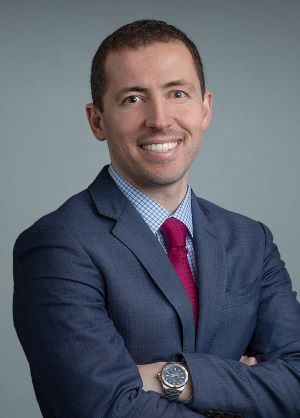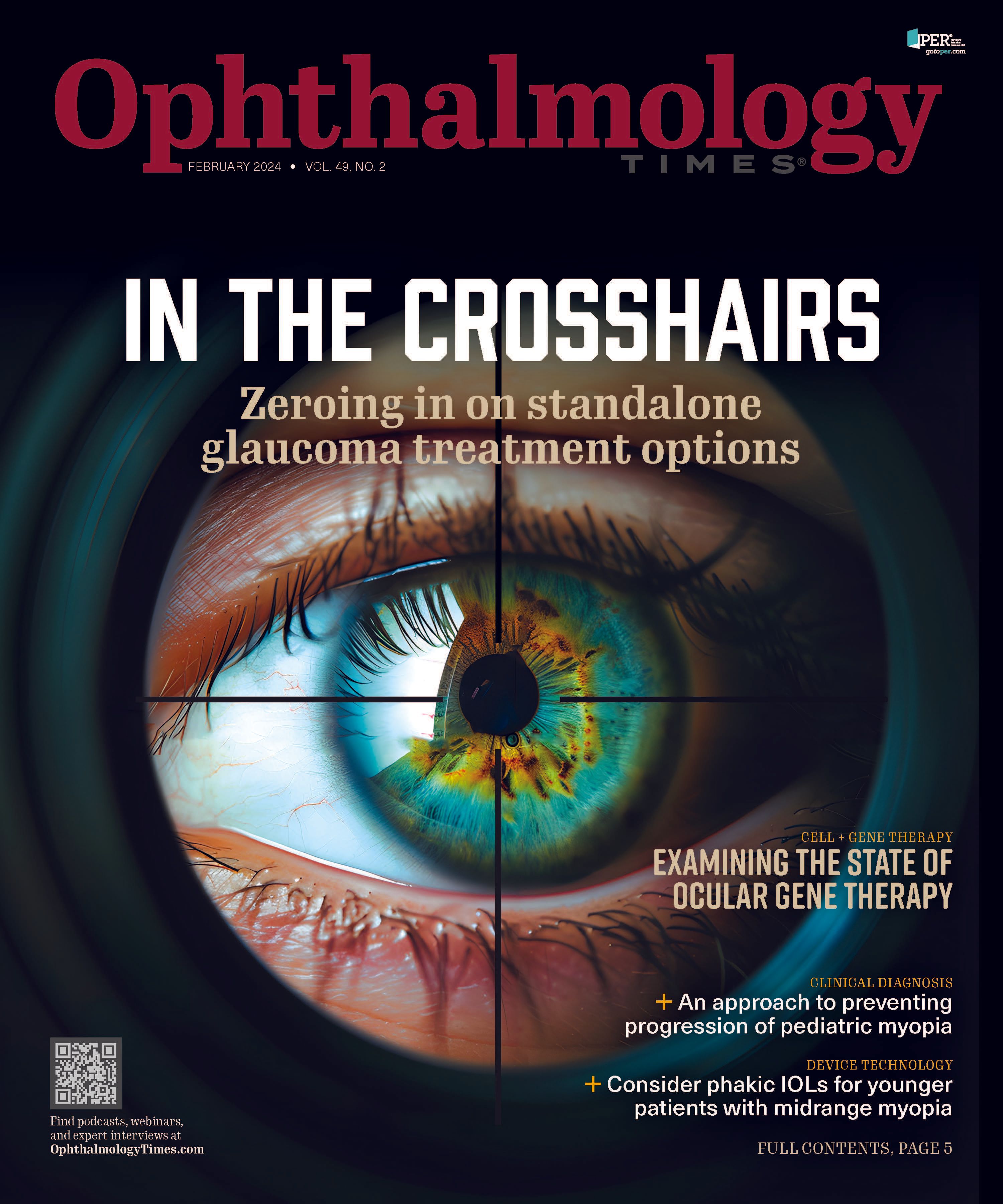Publication
Article
Digital Edition
Insight: A focus on fellows’ training and challenging glaucoma surgical cases
Author(s):
Teaching fellows can prove to be a rewarding experience for instructors.
(Image Credit: AdobeStock/Penatic Studio)

Reviewed by Joseph F. Panarelli, MD
Training fellows can be exasperating and rewarding, with lots of other feelings in between. Joseph F. Panarelli, MD, described what he has learned during glaucoma cases performed with and without a fellow. He is a professor of ophthalmology and the director of the Glaucoma Division at NYU Langone Health in New York, New York.
Panarelli addressed this topic when he delivered the David Worthen Memorial Lecture at the Johns Hopkins Wilmer Eye Institute’s Current Concepts in Ophthalmology meeting in Baltimore, Maryland.
He holds high expectations for his fellows. During his lecture, he urged them to care about their job, their responsibilities both at and outside work, and, most of all, their patients. They need to be observant and open to learning from mistakes, he said. Glaucoma, like much of medicine, is truly an art and is hard to teach in 1 year. Fellows need to take in as much as they can and be open to continue learning after they complete their training, he explained.
Panarelli pointed out that mistakes and complications happen. When they do, he advised that fellows maintain their composure, slow down, and ask for help when needed.
“It is important for trainees to learn how to bounce back after a tough case and finish their day,” he said. “You need to be able to learn from your mistakes but also forget them quickly and prepare for the next patient.”
Tube shunt and trabeculectomy complications
Tube shunts and trabeculectomies are 2 commonly performed surgeries to treat glaucoma and are not going away anytime soon, according to Panarelli. Given how frequently they are performed, it is important for trainees to be able to handle the multitude of complications.
Panarelli explained that during tube shunt procedures he has experienced it all: large conjunctival tears, scleral perforation, accidental cutting of the tube during repositioning, tube insertion into the suprachoroidal space, and so many more. Intraoperatively, he has also seen trabeculectomy complications, including flap issues, bleeding, and challenges with conjunctival closure.
The postoperative complications of both procedures include shallow anterior chamber/hypotony, bleb dysesthesia, wound leaks, fibrosis, and endophthalmitis.
Sometimes you have to be ready for complications or issues you would never expect, such as a patient removing the drapes and attempting to walk out of the room or a patient serenading the entire operating room during the entire case.
Regarding complications, Panarelli said that at times they occur because of inadequate preoperative or postoperative assessment. He highlighted the case of a 92-year-old patient with monocular vision with pseudoexfoliation glaucoma who underwent Xen Gel Stent (Allergan) placement. The patient had called with a loss of vision on a Friday but was not seen until Monday, at which time the patient underwent an urgent surgery to drain large, hemorrhagic choroidal effusions. This was a case, he said, that teaches you how quickly things can go from bad to really, really bad and why it is important to follow your postoperative patients closely.
Do fellows have a high learning burden?
Hands-on training is key for fellows. (Image courtesy of Joseph F. Panarelli, MD)

Keeping fellows’ training in mind, these surgical problems raise the question: Is there too much to teach? The list seems formidable: tube shunt procedures, trabeculectomies, canal-based microinvasive glaucoma surgeries, suprachoroidal surgery, microinvasive bleb-forming surgery, and cyclophotocoagulation.
Panarelli related that he only felt comfortable with trabeculectomy after performing the procedure for nearly 3 years. He struggled early on in the learning process and experienced his share of failures.
Contrasting trabeculectomy and tube shunts
Although trabeculectomy has proved efficacious and is inexpensive, effective, and long-lasting, it is not a panacea. “It is not easy, predictable, reproducible, and minimally anything,” Panarelli emphasized. For this reason, he has focused many of his efforts on trying to develop new surgical procedures that use microshunts to create trabeculectomy-like blebs in a more predictable, reproducible way. This has not been an easy road. Although the Xen Gel Stent is used widely in the United States, the surgical technique has changed much over the past several years as surgeons have tried to maximize its effectiveness.
The Preserflo MicroShunt (Santen) was evaluated in a randomized, prospective trial against trabeculectomy but did not meet the primary end point. Additionally, the FDA did not approve the product despite encouraging results at 2 and 4 years.
The take-home points, according to Panarelli, were that “microshunting procedures perform well but trabeculectomy still remains the procedure of choice in many situations. That is, as long as you are comfortable with it.”
A consideration
The question remains: Do we need to rethink our approach to glaucoma surgical training? Panarelli asked: Should we continue to expand our microinvasive glaucoma surgery armamentarium, or should we be teaching more traditional glaucoma surgery and how to deal with subsequent complications?
Perhaps the answer still needs to be determined.
Summing up his presentation, Panarelli said that involvement in fellowship training can run the gamut of emotions.
“Teaching a fellow can be challenging, stressful, scary, disappointing, and make you want to cry, a lot. But in the end, it is the best part of my job,” he concluded.

Joseph F. Panarelli, MD
E: joepanarelli@gmail.com
Panarelli is a consultant to AbbVie, Aerie Pharmaceuticals, Alcon, AOI Ophthalmics, CorneaGen, CorNeat Vision, Glaukos, New World Medical, Nova Eye Medical, Santen, and Zeiss.
References:
Panarelli JF, Moster MR, Garcia-Feijoo J, et al; INN005 Study Group. Ab-externo MicroShunt versus trabeculectomy in primary open-angle glaucoma: two-year results from a randomized, multicenter study. Ophthalmology. Published online September 27, 2023. doi:10.1016/j.ophtha.2023.09.023
Panarelli JF, Flowers BD, Barnebey H, Moster MR, Sidoti PA on behalf of the INN005 Study investigators. MicroShunt and trabeculectomy in patients with primary open-angle glaucoma: 4-year outcomes. Presented at: American Academy of Ophthalmology 2023 Annual Meeting; November 3-6, 2023; San Francisco, CA.

Newsletter
Don’t miss out—get Ophthalmology Times updates on the latest clinical advancements and expert interviews, straight to your inbox.




